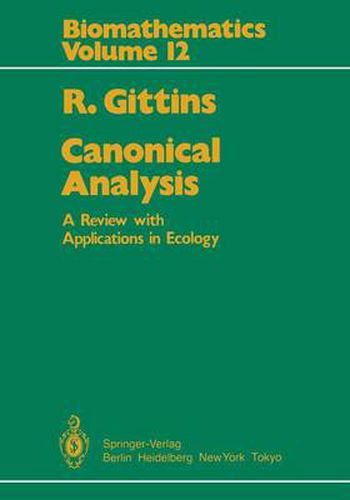Readings Newsletter
Become a Readings Member to make your shopping experience even easier.
Sign in or sign up for free!
You’re not far away from qualifying for FREE standard shipping within Australia
You’ve qualified for FREE standard shipping within Australia
The cart is loading…






This title is printed to order. This book may have been self-published. If so, we cannot guarantee the quality of the content. In the main most books will have gone through the editing process however some may not. We therefore suggest that you be aware of this before ordering this book. If in doubt check either the author or publisher’s details as we are unable to accept any returns unless they are faulty. Please contact us if you have any questions.
Relationships between sets of variables of different kinds are of interest in many branches of science. The question of the analysis of relationships of this sort has nevertheless rather surprisingly received less attention from statisticians and others than it would seem to deserve. Of the available methods, that address ing the question most directly is canonical correlation analysis, here referred to for convenience as canonical analysis. Yet canonical analysis is often coolly received despite a lack of suitable alternatives. The purpose of this book is to clarify just what may and what may not be accomplished by means of canoni cal analysis in one field of scientific endeavor. Canonical analysis is concerned with reducing the correlation structure be tween two (or more) sets of variables to its simplest possible form. After a review of the nature and properties of canonical analysis, an assessment of the method as an exploratory tool of use in ecological investigations is made. Applications of canonical analysis to several sets of ecological data are described and discussed with this objective in mind. The examples are drawn largely from plant ecology. The position is adopted that canonical analysis exists primarily to be used; the examples are accordingly worked through in some detail with the aim of showing how canonical analysis can contribute towards the attainment of ecological goals, as well as to indicate the kind and extent of the insight afforded.
$9.00 standard shipping within Australia
FREE standard shipping within Australia for orders over $100.00
Express & International shipping calculated at checkout
This title is printed to order. This book may have been self-published. If so, we cannot guarantee the quality of the content. In the main most books will have gone through the editing process however some may not. We therefore suggest that you be aware of this before ordering this book. If in doubt check either the author or publisher’s details as we are unable to accept any returns unless they are faulty. Please contact us if you have any questions.
Relationships between sets of variables of different kinds are of interest in many branches of science. The question of the analysis of relationships of this sort has nevertheless rather surprisingly received less attention from statisticians and others than it would seem to deserve. Of the available methods, that address ing the question most directly is canonical correlation analysis, here referred to for convenience as canonical analysis. Yet canonical analysis is often coolly received despite a lack of suitable alternatives. The purpose of this book is to clarify just what may and what may not be accomplished by means of canoni cal analysis in one field of scientific endeavor. Canonical analysis is concerned with reducing the correlation structure be tween two (or more) sets of variables to its simplest possible form. After a review of the nature and properties of canonical analysis, an assessment of the method as an exploratory tool of use in ecological investigations is made. Applications of canonical analysis to several sets of ecological data are described and discussed with this objective in mind. The examples are drawn largely from plant ecology. The position is adopted that canonical analysis exists primarily to be used; the examples are accordingly worked through in some detail with the aim of showing how canonical analysis can contribute towards the attainment of ecological goals, as well as to indicate the kind and extent of the insight afforded.